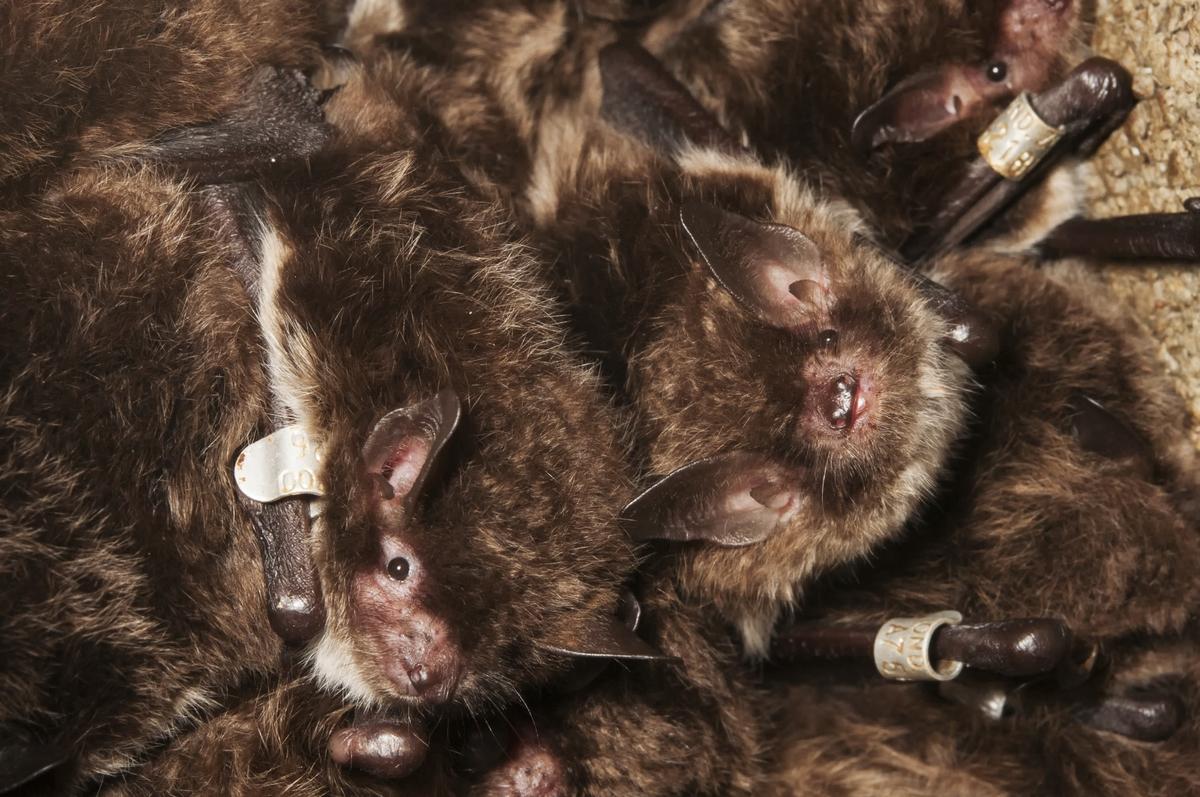
Did you know that we have 18 species of bats living here in the UK?
Along with many other UK species, bat populations have been in decline for around 100 years here in the UK, there are a wide range of reasons for this, however they broadly fall into the following categories:
- Reduction in Suitable Food - Bats feed on nocturnal flying insects, however development of land and intensive farming practices have reduced the suitable habitat required for them to reproduce, which in turn means there is less available food for bats.
- Development - Many species of bats live in the roof of buildings, they roost here and raise their young, however demolition while they are in hibernation or raising young can have disastrous consequences for them.
- Light Pollution - Because bats are nocturnal creatures, they dislike illuminated areas, this applies to both their roosting places and where they fly.
There is also emerging evidence that both Wind Turbines and radio waves from mobile phone masts could also be a potential problem.
Types of Bats in the UK
- Alcathoe Bat - Has only been confirmed as a resident in the UK since 2010, although this is likely due to it's similar appearance to other UK bat species, so has probably been resident here much longer.
- Barbastelle - A dark bat with large ears and is quite rare.
- Bechstein's Bat - This is one of the most rare species found in the UK, with small known populations in South East Wales and into the south of England.
- Brandt's Bat - Only marginally larger than the Whiskered Bat, with an identical shaggy coat, as a result they were believed to be the same species until the 70's.
- Brown Long Eared - Their large ears give them fantastic hearing and can sometimes be seen flying so close to the ground that they actually pick insects up of foliage on the ground.
- Common Pipistrelle - These are the most widespread and common bat in the UK, they fly in a wide range of habitat from open countryside to urban areas and can often be seen feeding at dusk.
.jpg)
- Daubenton's Bat - usually seen around water, they feed within centimeters of the waters surface and have been sighted actually picking prey from the waters surface with their feet.
- Greater Horseshoe Bat - So called because of the unusual skin folds around the nose, they often only feed at dusk and dawn, roosting for the remainder of the night, this is one of our largest species of bat in the UK.
- Grey Long Eared Bat - A very rare mid sized bat, found only in a few regions in the South of England
- Leisler's Bat - Has unusually long fur, particularly around the shoulders, making it appear similar to a lions mane, they naturally live in woodland and roost in trees, so bat nesting boxes have proved a good substitute where natural holes in trees are no longer available to them.
- Lesser Horseshoe - Similar in appearance to the Greater Horseshoe, but smaller in size.
- Nathusius' Pipisterelle - Originally a migratory species, but now known to breed in the UK and although rare, is becoming gradually more common.
- Natterer's Bat - Also known as the Red Armed Bat, due to it's pink limbs, it flies relatively slowly either over water or through trees, often taking from foliage and includes insects typically seen during the daylight.
- Noctule - Known to fly several miles to their feeding grounds, they are one of the largest species in the UK and can fly at up to 50 kph.
- Serotine Bat - Prefers to roost in old buildings and churches, this is another of the largest species in the UK and often emerges in good light.
- Soprano Pipistrelle - Consuming up to 3000 insects in a single night, the Pipistrelles are an essential element of our environment, the soprano is so called because of it's much higher frequency echolocation, to hear this you will need a bat detector or recorder.
- Whiskered Bat - Feeding for most of the night, the Whiskered Bats fly at up to 20 metres, most commonly found in the North and West of the UK.
- Greater Mouse Eared Bat - We have left this one until last and out of alphabetical order, because it was declared extinct in 1990 when the last remaining known male failed to return to is roost. However, in 2001 an emaciated female was found, however she died soon afterwards, but then in 2002 a juvenile male was discovered and has been recorded annually since. If they prove to survive they will be the largest species in the country.
Whilst all our bats are of a relatively similar size, there are over 1,100 species around the world, which is approximately a fifth of all mammals. Some are incredibly small such as the Bumblebee Bat, whilst flying foxes can have a wingspan of two metres.
Conservation
There are over 100 organised groups involved in bat conservation in the UK, if you would like further information The Bat Conservation Trust is a good place to start, they organise a wide range of events, bat walks and population monitoring, you may even get to have a go on an echolocation bat detector.
Or for statistics about populations DEFRA have information available


